The Plus Size Clothing market is expected to grow from USD 291.45 billion in 2022 to USD 523.42 billion by 2032, at a CAGR of 6.03% during the forecast period 2023-2032.
Plus-size clothing refers to garments specifically designed and tailored for individuals who wear larger sizes than the standard or traditional clothing range. It caters to people who typically require clothing sizes beyond the standard range offered by most mainstream fashion brands. Plus-size clothing acknowledges and embraces individuals' diverse body types and sizes, ensuring they have access to stylish, well-fitting, and comfortable clothing options. These garments are crafted with specific attention to proportion, fit, and design, catering to the unique needs and preferences of those who wear larger sizes.
The rise of body positivity movements and advocacy for inclusivity has fueled the demand for plus-size clothing. Growing awareness and acceptance of diverse body shapes and sizes leads to increased consumer confidence and demand for fashionable and well-fitting clothing options. Additionally, the rise of online shopping is anticipated to witness new opportunities over the forecast period. E-commerce platforms provide a convenient and accessible shopping experience for consumers, allowing them to explore a wide range of options and find clothing that meets their style and size preferences. On the other hand, physical retail spaces often have limited offerings for plus-size clothing, with many stores focusing primarily on standard sizes. This factor restricts the availability of plus-size options, making it more challenging for consumers to find suitable clothing in brick-and-mortar stores.
This study comprehensively analyses the type, size, end user, and region. The type segment includes casual wear, formal wear, sportswear and others. The casual wear segment held the highest market share in 2022. Casual wear is known for its comfortable fabrics, relaxed fits, and easy-to-wear designs. These factors appeal to plus-size consumers who prioritize comfort and mobility in their clothing choices. Casual wear offers relaxed styles that can be worn in various everyday settings, making it a popular choice for individuals seeking both comfort and style. The size segment is divided into 1 XL, 2 XL, 3 XL, 4 XL and Above 4 XL. The 3 XL segment registered the largest market share in 2022. There is a high demand for clothing in the 3XL segment due to the prevalence of individuals who fall within this size range. Plus-size consumers seeking clothing that fit well and offer comfort will likely gravitate towards brands that provide a range of styles and designs in 3XL sizes. The end user segment is classified into male and female. The male segment held the highest market revenue in 2022. There has been a significant shift in societal attitudes towards body positivity and acceptance for men of all sizes. This factor has increased demand for plus-size clothing options among male consumers who want to feel comfortable, confident, and stylish in their clothing choices.
The market has been divided into North America, Europe, Asia-Pacific, Middle East & Africa, and South America. The Asia-Pacific region held the highest market revenue in 2022. The growing population, rising disposable income, changing fashion trends, the influence of Western fashion, increasing retail and e-commerce presence, and increasing body positivity and inclusivity movements are driving the region's market growth.
Some of the notable players in the market are ASOS plc, Adidas AG, Forever21 Inc., Ralph Lauren, MANGO, H&M, Hanesbrands Inc., Evans, FTF IP COMPANY, INC., Lucky Brand LLC, Lauren Corporation, Old Navy, LLC, PUMA SE, Nike, Inc. and Torrid LLC among others.
Report Description:
1. Introduction
1.1. Objectives of the Study
1.2. Market Definition
1.3. Research Scope
1.4. Currency
1.5. Key Target Audience
2. Research Methodology and Assumptions
3. Executive Summary
4. Premium Insights
4.1. Porter’s Five Forces Analysis
4.2. Value Chain Analysis
4.3. Top Investment Pockets
4.3.1. Market Attractiveness Analysis By Type
4.3.2. Market Attractiveness Analysis By Size
4.3.3. Market Attractiveness Analysis By End User
4.3.4. Market Attractiveness Analysis By Region
4.4. Industry Trends
5. Market Dynamics
5.1. Market Evaluation
5.2. Drivers
5.2.1. Increasing body positivity
5.3. Restraints
5.3.1. Limited retail presence
5.4. Opportunities
5.4.1. Online retail and e-commerce
5.5. Challenges
5.5.1. Negative body stereotypes
6. Global Plus Size Clothing Market Analysis and Forecast, By Type
6.1. Segment Overview
6.2. Casual Wear
6.3. Formal Wear
6.4. Sportswear
6.5. Others
7. Global Plus Size Clothing Market Analysis and Forecast, By Size
7.1. Segment Overview
7.2. 1 XL
7.3. 2 XL
7.4. 3 XL
7.5. 4 XL
7.6. Above 4 XL
8. Global Plus Size Clothing Market Analysis and Forecast, By End User
8.1. Segment Overview
8.2. Male
8.3. Female
9. Global Plus Size Clothing Market Analysis and Forecast, By Regional Analysis
9.1. Segment Overview
9.2. North America
9.2.1. U.S.
9.2.2. Canada
9.2.3. Mexico
9.3. Europe
9.3.1. Germany
9.3.2. France
9.3.3. U.K.
9.3.4. Italy
9.3.5. Spain
9.4. Asia-Pacific
9.4.1. Japan
9.4.2. China
9.4.3. India
9.5. South America
9.5.1. Brazil
9.6. Middle East and Africa
9.6.1. UAE
9.6.2. South Africa
10. Global Plus Size Clothing Market-Competitive Landscape
10.1. Overview
10.2. Market Share of Key Players in the Plus Size Clothing Market
10.2.1. Global Company Market Share
10.2.2. North America Company Market Share
10.2.3. Europe Company Market Share
10.2.4. APAC Company Market Share
10.3. Competitive Situations and Trends
10.3.1. Product Launches and Developments
10.3.2. Partnerships, Collaborations, and Agreements
10.3.3. Mergers & Acquisitions
10.3.4. Expansions
11. Company Profiles
11.1. ASOS plc
11.1.1. Business Overview
11.1.2. Company Snapshot
11.1.3. Company Market Share Analysis
11.1.4. Company Product Portfolio
11.1.5. Recent Developments
11.1.6. SWOT Analysis
11.2. Adidas AG
11.2.1. Business Overview
11.2.2. Company Snapshot
11.2.3. Company Market Share Analysis
11.2.4. Company Product Portfolio
11.2.5. Recent Developments
11.2.6. SWOT Analysis
11.3. Forever21 Inc.
11.3.1. Business Overview
11.3.2. Company Snapshot
11.3.3. Company Market Share Analysis
11.3.4. Company Product Portfolio
11.3.5. Recent Developments
11.3.6. SWOT Analysis
11.4. Ralph Lauren
11.4.1. Business Overview
11.4.2. Company Snapshot
11.4.3. Company Market Share Analysis
11.4.4. Company Product Portfolio
11.4.5. Recent Developments
11.4.6. SWOT Analysis
11.5. MANGO
11.5.1. Business Overview
11.5.2. Company Snapshot
11.5.3. Company Market Share Analysis
11.5.4. Company Product Portfolio
11.5.5. Recent Developments
11.5.6. SWOT Analysis
11.6. H&M
11.6.1. Business Overview
11.6.2. Company Snapshot
11.6.3. Company Market Share Analysis
11.6.4. Company Product Portfolio
11.6.5. Recent Developments
11.6.6. SWOT Analysis
11.7. Hanesbrands Inc.
11.7.1. Business Overview
11.7.2. Company Snapshot
11.7.3. Company Market Share Analysis
11.7.4. Company Product Portfolio
11.7.5. Recent Developments
11.7.6. SWOT Analysis
11.8. Evans
11.8.1. Business Overview
11.8.2. Company Snapshot
11.8.3. Company Market Share Analysis
11.8.4. Company Product Portfolio
11.8.5. Recent Developments
11.8.6. SWOT Analysis
11.9. FTF IP Company, Inc.
11.9.1. Business Overview
11.9.2. Company Snapshot
11.9.3. Company Market Share Analysis
11.9.4. Company Product Portfolio
11.9.5. Recent Developments
11.9.6. SWOT Analysis
11.10. Lucky Brand LLC
11.10.1. Business Overview
11.10.2. Company Snapshot
11.10.3. Company Market Share Analysis
11.10.4. Company Product Portfolio
11.10.5. Recent Developments
11.10.6. SWOT Analysis
11.11. Lauren Corporation
11.11.1. Business Overview
11.11.2. Company Snapshot
11.11.3. Company Market Share Analysis
11.11.4. Company Product Portfolio
11.11.5. Recent Developments
11.11.6. SWOT Analysis
11.12. Old Navy, LLC
11.12.1. Business Overview
11.12.2. Company Snapshot
11.12.3. Company Market Share Analysis
11.12.4. Company Product Portfolio
11.12.5. Recent Developments
11.12.6. SWOT Analysis
11.13. PUMA SE
11.13.1. Business Overview
11.13.2. Company Snapshot
11.13.3. Company Market Share Analysis
11.13.4. Company Product Portfolio
11.13.5. Recent Developments
11.13.6. SWOT Analysis
11.14. Nike, Inc.
11.14.1. Business Overview
11.14.2. Company Snapshot
11.14.3. Company Market Share Analysis
11.14.4. Company Product Portfolio
11.14.5. Recent Developments
11.14.6. SWOT Analysis
11.15. Torrid LLC
11.15.1. Business Overview
11.15.2. Company Snapshot
11.15.3. Company Market Share Analysis
11.15.4. Company Product Portfolio
11.15.5. Recent Developments
11.15.6. SWOT Analysis
List of Table
1. Global Plus Size Clothing Market, By Type, 2019-2032 (USD Billion) (K Units)
2. Global Casual Wear, Plus Size Clothing Market, By Region, 2019-2032 (USD Billion) (K Units)
3. Global Formal Wear, Plus Size Clothing Market, By Region, 2019-2032 (USD Billion) (K Units)
4. Global Sportswear, Plus Size Clothing Market, By Region, 2019-2032 (USD Billion) (K Units)
5. Global Others, Plus Size Clothing Market, By Region, 2019-2032 (USD Billion) (K Units)
6. Global Plus Size Clothing Market, By Size, 2019-2032 (USD Billion) (K Units)
7. Global 1 XL, Plus Size Clothing Market, By Region, 2019-2032 (USD Billion) (K Units)
8. Global 2 XL, Plus Size Clothing Market, By Region, 2019-2032 (USD Billion) (K Units)
9. Global 3 XL, Plus Size Clothing Market, By Region, 2019-2032 (USD Billion) (K Units)
10. Global 4 XL, Plus Size Clothing Market, By Region, 2019-2032 (USD Billion) (K Units)
11. Global Above 4 XL, Plus Size Clothing Market, By Region, 2019-2032 (USD Billion) (K Units)
12. Global Plus Size Clothing Market, By End User, 2019-2032 (USD Billion) (K Units)
13. Global Male, Plus Size Clothing Market, By Region, 2019-2032 (USD Billion) (K Units)
14. Global Female, Plus Size Clothing Market, By Region, 2019-2032 (USD Billion) (K Units)
15. Global Plus Size Clothing Market, By Region, 2019-2032 (USD Billion) (K Units)
16. North America Plus Size Clothing Market, By Type, 2019-2032 (USD Billion) (K Units)
17. North America Plus Size Clothing Market, By Size, 2019-2032 (USD Billion) (K Units)
18. North America Plus Size Clothing Market, By End User, 2019-2032 (USD Billion) (K Units)
19. U.S. Plus Size Clothing Market, By Type, 2019-2032 (USD Billion) (K Units)
20. U.S. Plus Size Clothing Market, By Size, 2019-2032 (USD Billion) (K Units)
21. U.S. Plus Size Clothing Market, By End User, 2019-2032 (USD Billion) (K Units)
22. Canada Plus Size Clothing Market, By Type, 2019-2032 (USD Billion) (K Units)
23. Canada Plus Size Clothing Market, By Size, 2019-2032 (USD Billion) (K Units)
24. Canada Plus Size Clothing Market, By End User, 2019-2032 (USD Billion) (K Units)
25. Mexico Plus Size Clothing Market, By Type, 2019-2032 (USD Billion) (K Units)
26. Mexico Plus Size Clothing Market, By Size, 2019-2032 (USD Billion) (K Units)
27. Mexico Plus Size Clothing Market, By End User, 2019-2032 (USD Billion) (K Units)
28. Europe Plus Size Clothing Market, By Type, 2019-2032 (USD Billion) (K Units)
29. Europe Plus Size Clothing Market, By Size, 2019-2032 (USD Billion) (K Units)
30. Europe Plus Size Clothing Market, By End User, 2019-2032 (USD Billion) (K Units)
31. Germany Plus Size Clothing Market, By Type, 2019-2032 (USD Billion) (K Units)
32. Germany Plus Size Clothing Market, By Size, 2019-2032 (USD Billion) (K Units)
33. Germany Plus Size Clothing Market, By End User, 2019-2032 (USD Billion) (K Units)
34. France Plus Size Clothing Market, By Type, 2019-2032 (USD Billion) (K Units)
35. France Plus Size Clothing Market, By Size, 2019-2032 (USD Billion) (K Units)
36. France Plus Size Clothing Market, By End User, 2019-2032 (USD Billion) (K Units)
37. U.K. Plus Size Clothing Market, By Type, 2019-2032 (USD Billion) (K Units)
38. U.K. Plus Size Clothing Market, By Size, 2019-2032 (USD Billion) (K Units)
39. U.K. Plus Size Clothing Market, By End User, 2019-2032 (USD Billion) (K Units)
40. Italy Plus Size Clothing Market, By Type, 2019-2032 (USD Billion) (K Units)
41. Italy Plus Size Clothing Market, By Size, 2019-2032 (USD Billion) (K Units)
42. Italy Plus Size Clothing Market, By End User, 2019-2032 (USD Billion) (K Units)
43. Spain Plus Size Clothing Market, By Type, 2019-2032 (USD Billion) (K Units)
44. Spain Plus Size Clothing Market, By Size, 2019-2032 (USD Billion) (K Units)
45. Spain Plus Size Clothing Market, By End User, 2019-2032 (USD Billion) (K Units)
46. Asia Pacific Plus Size Clothing Market, By Type, 2019-2032 (USD Billion) (K Units)
47. Asia Pacific Plus Size Clothing Market, By Size, 2019-2032 (USD Billion) (K Units)
48. Asia Pacific Plus Size Clothing Market, By End User, 2019-2032 (USD Billion) (K Units)
49. Japan Plus Size Clothing Market, By Type, 2019-2032 (USD Billion) (K Units)
50. Japan Plus Size Clothing Market, By Size, 2019-2032 (USD Billion) (K Units)
51. Japan Plus Size Clothing Market, By End User, 2019-2032 (USD Billion) (K Units)
52. China Plus Size Clothing Market, By Type, 2019-2032 (USD Billion) (K Units)
53. China Plus Size Clothing Market, By Size, 2019-2032 (USD Billion) (K Units)
54. China Plus Size Clothing Market, By End User, 2019-2032 (USD Billion) (K Units)
55. India Plus Size Clothing Market, By Type, 2019-2032 (USD Billion) (K Units)
56. India Plus Size Clothing Market, By Size, 2019-2032 (USD Billion) (K Units)
57. India Plus Size Clothing Market, By End User, 2019-2032 (USD Billion) (K Units)
58. South America Plus Size Clothing Market, By Type, 2019-2032 (USD Billion) (K Units)
59. South America Plus Size Clothing Market, By Size, 2019-2032 (USD Billion) (K Units)
60. South America Plus Size Clothing Market, By End User, 2019-2032 (USD Billion) (K Units)
61. Brazil Plus Size Clothing Market, By Type, 2019-2032 (USD Billion) (K Units)
62. Brazil Plus Size Clothing Market, By Size, 2019-2032 (USD Billion) (K Units)
63. Brazil Plus Size Clothing Market, By End User, 2019-2032 (USD Billion) (K Units)
64. Middle East and Africa Plus Size Clothing Market, By Type, 2019-2032 (USD Billion) (K Units)
65. Middle East and Africa Plus Size Clothing Market, By Size, 2019-2032 (USD Billion) (K Units)
66. Middle East and Africa Plus Size Clothing Market, By End User, 2019-2032 (USD Billion) (K Units)
67. UAE Plus Size Clothing Market, By Type, 2019-2032 (USD Billion) (K Units)
68. UAE Plus Size Clothing Market, By Size, 2019-2032 (USD Billion) (K Units)
69. UAE Plus Size Clothing Market, By End User, 2019-2032 (USD Billion) (K Units)
70. South Africa Plus Size Clothing Market, By Type, 2019-2032 (USD Billion) (K Units)
71. South Africa Plus Size Clothing Market, By Size, 2019-2032 (USD Billion) (K Units)
72. South Africa Plus Size Clothing Market, By End User, 2019-2032 (USD Billion) (K Units)
List of Figures
1. Global Plus Size Clothing Market Segmentation
2. Plus Size Clothing Market: Research Methodology
3. Market Size Estimation Methodology: Bottom-Up Approach
4. Market Size Estimation Methodology: Top-Down Approach
5. Data Triangulation
6. Porter’s Five Forces Analysis
7. Value Chain Analysis
8. Global Plus Size Clothing Market Attractiveness Analysis By Type
9. Global Plus Size Clothing Market Attractiveness Analysis By Size
10. Global Plus Size Clothing Market Attractiveness Analysis By End User
11. Global Plus Size Clothing Market Attractiveness Analysis by Region
12. Global Plus Size Clothing Market: Dynamics
13. Global Plus Size Clothing Market Share By Type (2023 & 2032)
14. Global Plus Size Clothing Market Share By Size (2023 & 2032)
15. Global Plus Size Clothing Market Share By End User (2023 & 2032)
16. Global Plus Size Clothing Market Share by Regions (2023 & 2032)
17. Global Plus Size Clothing Market Share by Company (2022)
Market research is a method of gathering, assessing and deducing data & information about a particular market. Market research is very crucial in these days. The techniques analyze about how a product/service can be offered to the market to its end-customers, observe the impact of that product/service based on the past customer experiences, and cater their needs and demands. Owing to the successful business ventures, accurate, relevant and thorough information is the base for all the organizations because market research report/study offers specific market related data & information about the industry growth prospects, perspective of the existing customers, and the overall market scenario prevailed in past, ongoing present and developing future. It allows the stakeholders and investors to determine the probability of a business before committing substantial resources to the venture. Market research helps in solving the marketing issues challenges that a business will most likely face.
Market research is valuable because of the following reasons:
Our research report features both the aspects; qualitative and quantitative. Qualitative part provides insights about the market driving forces, potential opportunities, customer’s demands and requirement which in turn help the companies to come up with new strategies in order to survive in the long run competition. The quantitative segment offers the most credible information related to the industry. Based on the data gathering, we use to derive the market size and estimate their future growth prospects on the basis of global, region and country.
Our market research process involves with the four specific stages.

Data Collection: This stage of the market research process involves with the gathering and collecting of the market/industry related data from the sources. There are basically two types of research methods:
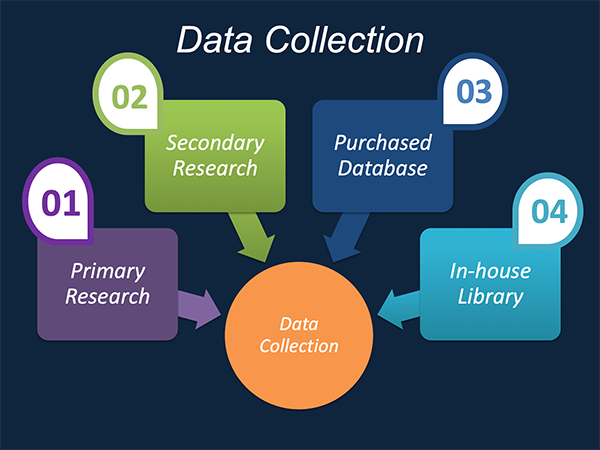
Data Synthesis: This stage includes the evaluation and assessment of all the data acquired from the primary and secondary research. It likewise includes in evaluating the information for any disparity watched while information gathering identified with the market. The data & information is gathered with consideration to the heterogeneity of sources. Scientific and statistical methods are implemented for synthesizing dissimilar information sets and provide the relevant data which is fundamental for formulating strategies. Our organization has broad involvement with information amalgamation where the information goes through different stages:


Market Formulation & Deduction: The last stage includes assigning the data & information in a suitable way in order to derive market size. Analyst reviews and domain based opinions based on holistic approach of market estimation combined with industry investigation additionally features a crucial role in this stage.
This stage includes with the finalization of the market size and numbers that we have gathered from primary and secondary research. With the data & information addition, we ensure that there is no gap in the market information. Market trend analysis is finished by our analysts by utilizing data extrapolation procedures, which give the most ideal figures to the market.
Data Validation: Validation is the most crucial step in the process. Validation & re-validation through scientifically designed technique and process that helps us finalize data-points to be used for final calculations. This stage also involves with the data triangulation process. Data triangulation generally implicates the cross validation and matching the data which has been collected from primary and secondary research methods.





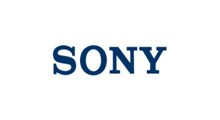

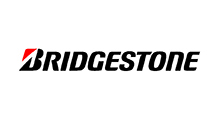

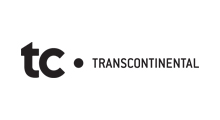















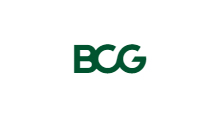


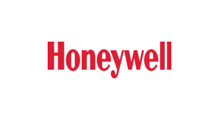

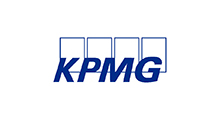
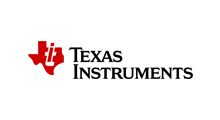



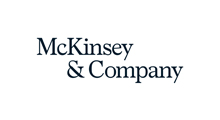

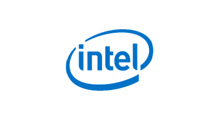







Free Customization
Countries can be added on demand
Free yearly update on purchase of Multi/Corporate User License
Companies served till date

We serve our customers 24x7 for 365 days through calls, emails and live chat options.
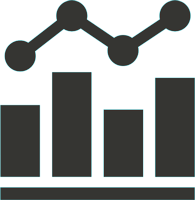
Huge database of exceptional market reports bringing market intelligence to your fingertips.

SSL enabled, we offer you various secured payment options for risk free purchase.